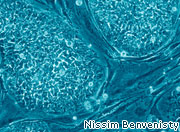Doctors have expressed delight at a groundbreaking adult stem cell treatment, which has enabled a number of multiple sclerosis (MS) suffers to make dramatic recoveries.
The new treatment, which uses a patient’s own stem cells, enabled some sufferers to walk, run and even dance again during research trials involving 24 patients.
One partially sighted man recovered his sight and a woman who was dependent on a ventilator is now living a normal life.
Immune system
Researchers at the Royal Hallamshire Hospital in Sheffield used a new technique known as autologous haematopoietic stem cell transplantation (HSCT) to treat patients aged between early twenties and late fifties.
During HSCT a patient’s stem cells are harvested. Once their immune system is destroyed with chemotherapy their harvested stem cells are then infused back into their body, and within a month their immune system is rebuilt and some patients regain feeling in their limbs.
This treatment is the first to reverse the effects of MS, a condition which has no known cure and affects around 100,000 people in Britain.
The development further shows the effectiveness of adult stem cell research compared to controversial embryonic stem cell research, which involves the destruction of human embryos.
Improvements
Professor Basil Sharrack, a neurologist, expressed amazement at the success of the technique, saying, “we have seen profound neurological improvements”.
But he warned: “This is not a treatment suitable for everybody because it is very aggressive and patients need to be quite fit to withstand the effects of the chemotherapy.”
Sam Ramsey, a 29-year-old former care assistant from Nottinghamshire, was the first UK patient to be treated, nearly four years ago. She was unable to breathe without a ventilator after being paralysed from the neck down by MS.
Long haul
“I can remember a couple of weeks after the transplant, my sister went running around the room when my fingers started to move again”.
“From there it has been a long, slow haul, with lots of physiotherapy and exercises, but I am now walking around on crutches and I have almost got full strength back in my arms. I recently passed my driving test and I am hoping to find a job. This treatment has given me my life back.”
Holly Drewry was diagnosed with MS at 21, and required use of a wheelchair after suffering a severe attack shortly after the birth of her daughter who is now two.
Dance
Her stem cell transplant took place in June 2013.
She said: “It worked wonders. After three weeks, I called my mum and said, ‘I can stand!’ We were all crying. Now I can run a little bit, I can dance. I enjoy walking my daughter around the park in her pram.”
Chris Button, who was 30 when he was diagnosed with MS after losing the sight in one eye last May, said: “I started to regain my sight a couple of weeks after the stem cells had been transplanted”, and now his sight is “95% back to normal”.
The MS Society welcomed the research but remained cautious ahead of larger trials and long-term data.


